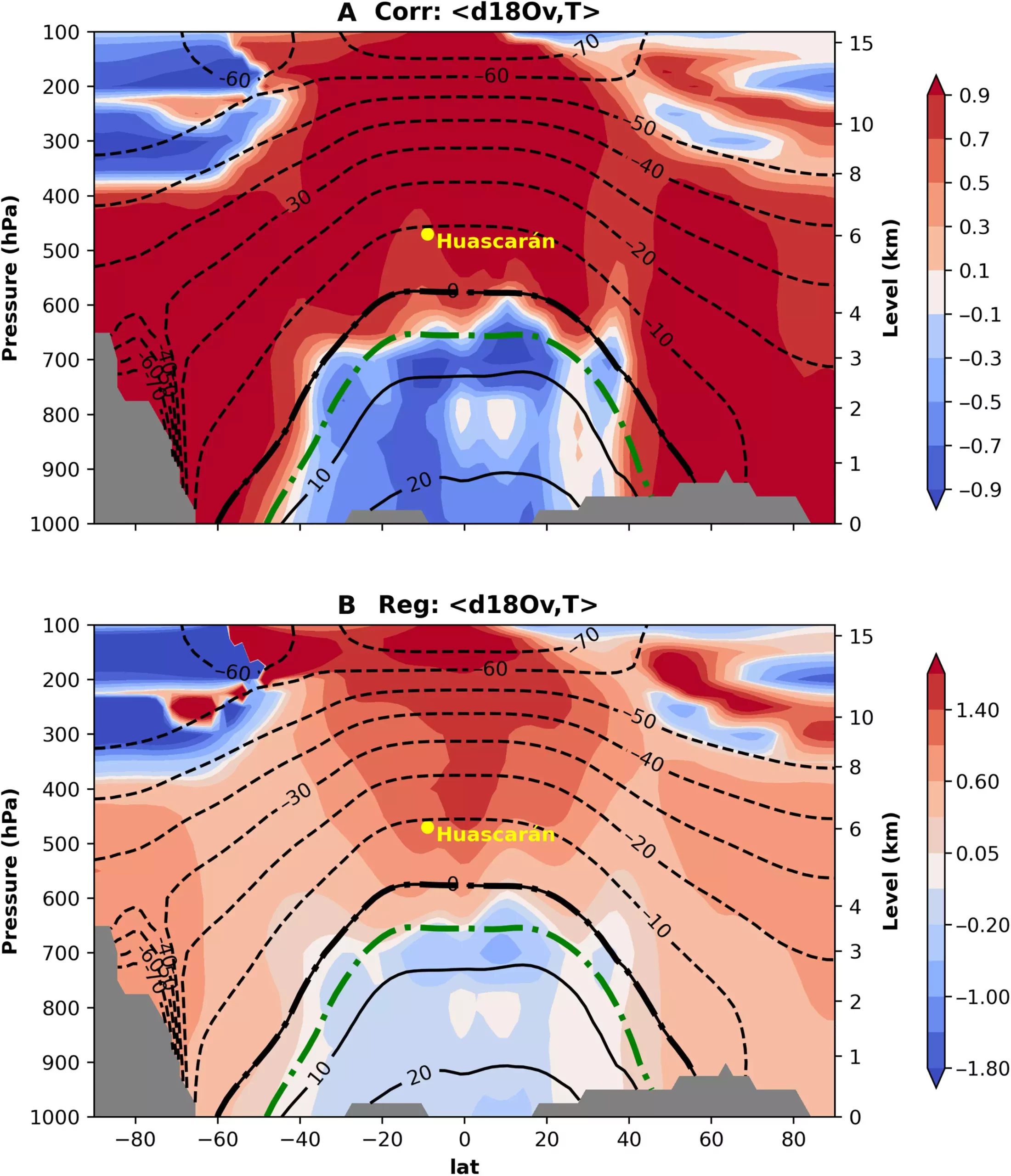A groundbreaking study conducted by scientists at The Ohio State University has discovered that ice recovered from high tropical mountains can unveil crucial information about past climate changes on Earth. In a surprising revelation, the study revealed that oxygen-stable isotope records found in ice cores from tropical mountain glaciers can offer a unique insight into the paleoclimate history of the middle and upper troposphere. By combining ice core proxy records, paleoclimate simulations, and modern satellite measurements, the researchers have unlocked a distinct climate story, shedding light on the Earth’s ancient dynamics. The findings from this study not only challenge previous climate models but also present new theories regarding climate changes throughout the ages.
Unlike ice cores retrieved from polar regions such as Greenland or Antarctica, the ice core collected from Nevado Huascarán in Peru provides an extraordinary glimpse into the Earth’s mean temperature. The ice from tropical regions, referred to as a “Goldilocks-type” indicator, presents a perfect equilibrium, offering evidence that is “just right” for measuring the planet’s average temperature over time. The ice core from Nevado Huascarán, formed in a high-mountain region unconnected to the oceans, is a significant indicator of global mean temperature change. It provides a distinct and purely land-based estimate of global cooling during the Earth’s last glacial period, revealing a temperature decrease of 5.9°C. By acting as a weather tower, the ice core silently records atmospheric history, delivering invaluable information about past climate dynamics.
The study emphasizes that the highest tropical ice records, unaffected by regional warming features due to their unique elevation and location, offer a more precise measurement of surface global mean temperature compared to records that reflect regional changes. This implies that even a single tropical ice core can significantly enhance scientists’ understanding of various climate elements, including temperature responses during periods of rapid climate change. Furthermore, these ice cores encapsulate potent greenhouse gases like methane, which can warm the atmosphere rapidly. As methane concentration changes over time, extracting it from the ice cores enables the construction of a historical record of its atmospheric presence. These tropical ice cores, when integrated with data from polar regions, contribute to a global perspective on Earth’s climate, making them invaluable assets in advancing climate research.
The study’s findings also shed light on a long-standing scientific debate surrounding the interpretation of oxygen-stable isotopes in tropical ice cores. Previous studies have questioned whether these ice cores serve as proxies for determining atmospheric changes through temperature or precipitation processes. However, this study resolves the dispute by establishing that tropical ice cores act as recorders of air temperature in the mid-upper troposphere across tropical regions. More significantly, they also serve as recorders of the global mean surface temperature during the Earth’s last glacial period. This breakthrough brings us closer to a comprehensive understanding of Earth’s climate patterns, which can refine future climate models and improve predictions of extreme weather events.
The researchers emphasize that this groundbreaking research would not have been possible without collaboration among experts from various fields, extending beyond the traditional scientific community studying ice cores. Yuntao Bao, a Ph.D. student in geography at Ohio State and a co-author of the study, stresses the importance of collaborating with individuals from different backgrounds to foster a deeper understanding of the world. By continuously challenging and enriching our knowledge, collaborative efforts enable scientific breakthroughs and drive progress in the field of paleoclimatology.
The study carried out by scientists at The Ohio State University demonstrates how ice cores recovered from tropical mountains can provide unparalleled insights into Earth’s past climate changes. Through the analysis of oxygen-stable isotope records in tropical ice cores, researchers have unraveled the Earth’s paleoclimate history and refined our understanding of climate dynamics. These ice cores, acting as “weather towers” and containing valuable information about ancient temperatures and greenhouse gas concentrations, offer a more accurate measurement of surface global mean temperature. By integrating data from tropical and polar regions, scientists gain a comprehensive view of Earth’s climate, which is crucial for the development of future climate models and predictions of extreme weather events. This study highlights the significance of collaboration across diverse fields and emphasizes the continuous pursuit of knowledge to enhance our understanding of the world we inhabit.


Leave a Reply